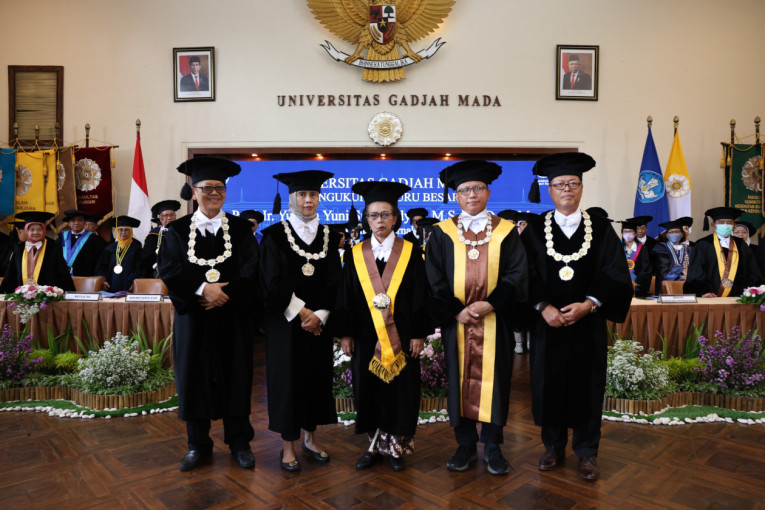
In the vast landscape of milk production, dairy cows have long reigned supreme. However, beyond the familiar moo, other milk-yielding mammals like buffaloes, goats, and horses stand ready to contribute, albeit on a smaller scale.
Indonesia’s annual milk demand is staggering, estimated at 4.4 million tons or 11 tons daily. Alas, reality paints a different picture, with 2022 witnessing only 968,980 tons of milk, courtesy of 569.43 thousand cows, as per the Statistics of Indonesia data.
Professor Yustina Yuni Suranindyah from the UGM Faculty of Animal Sciences emphasized this discrepancy during her inauguration as a professor in animal science on Tuesday (Jan. 16) at the UGM Senate Hall.
Under “The Role of Small Ruminants in Providing Animal Protein in Indonesia: Challenges and Prospects,” Professor Suranindyah advocated including dairy goats as a viable alternative to conventional dairy cows.
With adaptability to diverse geographical and climatic conditions, goats possess unique traits ideal for development in less fertile regions.
“Their compact size, rapid maturity, short gestation period, and prolificacy make goats reproduce quickly and without substantial capital,” she noted.
Globally, there are 570 goat breeds, with 146 in Asia, of which 94% are meat producers. Dairy goat breeds in Asia are a minority, comprising 13 pure breeds with low to moderate milk production capabilities. Nonetheless, there are 15 potentially improver breeds and 13 dual-purpose breeds.
The “potentially improver” classification refers to breeds with the potential to form a unique breed with specific genetic traits, surpassing average production standards while adapting to challenging environments.
Indonesia boasts two dominant goat breeds: the native Kacang goat and the imported Etawah goat. The Kacang goat, believed to have originated in Indonesia or was introduced by Hindus and acclimated over generations, is found in Java and Sumatra.
In contrast, the Etawah goat, imported from India in 1925 by the Dutch Colonial government, took root in Java’s Menoreh hills and Kaligesing, Purworejo.
Over time, crossbreeding yielded the Peranakan Etawah (PE) goat, renowned as the best milk-producing goat in tropical areas. In commercial milk-focused farms, PE goats achieve daily milk production ranging from 0.96 to 1.34 liters over 5 to 7 months.
Here, PE goat management prioritizes dairy farming, maximizing milk output for commercial needs by strategically managing weaning times and nutritional support for offspring growth.
Strategies like lactation management, weaning, milk replacers, feed supplementation, and extending lactation periods prove effective in further elevating milk production in dual-purpose goats.
In the case of PE goats, lactation periods can stretch beyond a year by delaying mating post-partum.
“Farmers can utilize older lactating goats as ongoing milk producers with sufficient nutrition, while younger does are reserved for breeding purposes,” Professor Suranindyah recommended.
The growth of goat milk production, predominantly processed into dry milk powder, is evident in the proliferation of milk processing centers across several dairy goat development regions.
From small farms to large-scale enterprises, goat milk prices in some areas surpass those of cow’s milk, offering promising prospects for investors.
With the population’s expanding purchasing power and a growing interest in goat milk consumption, small ruminants, particularly dairy goats, stand at the cusp of transformative development in Indonesia.
However, institutional support becomes imperative to empower small-scale farmers and overcome hurdles related to seed supply, feed, health control, and adopting Good Dairy Farming Practices (GDFP).
Professor Suranindyah concluded, “This development requires robust backing and guidance from the government, universities, and institutions to enhance productivity and establish consumer trust through the right quality standards.”
Author: Gusti Grehenson
Photographer: Donnie

